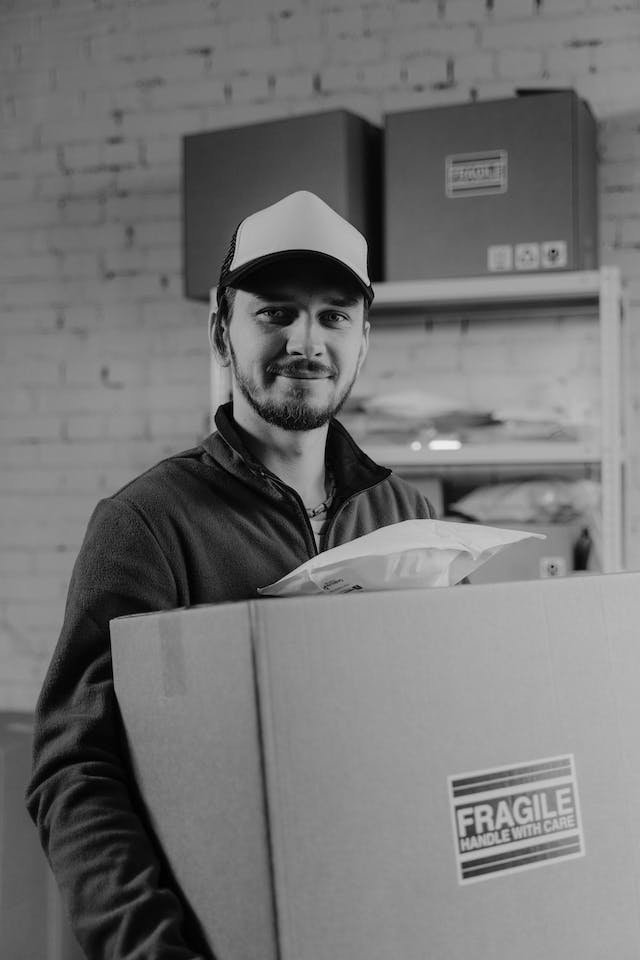Moving is a significant undertaking, and while it marks the beginning of a new chapter, it often comes with environmental concerns due to the use of materials and energy. However, the good news is that you can minimize your carbon footprint and make your move eco-friendly.
This article will explore various sustainable and environmentally friendly Moving Tips to ensure a green move with Richmond Removals.
1. Sustainable Moving Tips
A. Cardboard Alternatives:
- Instead of relying solely on traditional cardboard boxes, consider alternatives such as reusable plastic bins, which are durable and can be easily returned or repurposed after the move.
B. Biodegradable Packing Peanuts:
- Opt for biodegradable or compostable packing peanuts made from natural materials like cornstarch. They provide the same protection for fragile items without harming the environment.
C. Eco-Friendly Bubble Wrap:
- Choose bubble wrap made from recycled materials or invest in bubble wrap alternatives, such as recycled newspaper or eco-friendly cushioning materials.
2. Responsible Furniture Disposal
A. Donate or Sell Unwanted Items:
- Before the move, declutter responsibly by donating or selling items you no longer need. This reduces the amount of furniture and belongings that end up in landfills.
B. Furniture Recycling:
- If you need to dispose of furniture, explore recycling options. Many communities have furniture recycling programs that repurpose or recycle old furniture.
C. Choose Sustainable Furniture:
- When purchasing new furniture for your new space, opt for pieces made from sustainable materials or second-hand furniture to reduce the demand for new resources.
3. Green Transportation Options
A. Choose a Fuel-Efficient Moving Truck:
- If you’re renting a moving truck, select a vehicle that is fuel-efficient or uses alternative fuels. Some companies offer trucks that run on biodiesel or compressed natural gas.
B. Consider Hybrid or Electric Options:
- If your move is local, explore the possibility of using hybrid or electric vehicles. This reduces the carbon emissions associated with traditional moving trucks.
C. Share the Ride:
- Coordinate with neighbors or others in your community who may be planning a move around the same time. Sharing the ride reduces the number of vehicles on the road and minimizes the environmental impact.
4. Energy-Efficient Packing Process
A. Plan Efficient Routes:
- Plan your moving routes strategically to minimize travel time and fuel consumption. This not only reduces emissions but also helps you save on transportation costs.
B. Pack Light:
- Consider the weight of your belongings when packing. Lighter loads result in better fuel efficiency during transportation.
C. Timing Matters:
- If possible, schedule your move during off-peak hours to avoid traffic congestion. This not only saves time but also contributes to a more energy-efficient move.
5. Waste Reduction Strategies
A. Reusable Packing Materials:
- Invest in reusable packing materials such as cloth or mesh bags, which can be used for multiple moves and significantly reduce waste.
B. Recycle Packing Materials:
- After the move, recycle cardboard boxes, paper, and other packing materials. Many communities have recycling programs, making it easy to dispose of these materials responsibly.
C. Upcycling:
- Get creative and upcycle packing materials for other purposes. For instance, use old newspapers as padding for fragile items or turn cardboard boxes into storage solutions.
6. Energy-Efficient Practices
A. Use Energy-Efficient Lighting:
- If you’re moving during the evening, use energy-efficient LED or CFL (compact fluorescent lamp) light bulbs to illuminate your packing and unpacking process.
B. Turn Off Appliances:
- Ensure all electronic appliances are turned off and unplugged before the move. This not only saves energy but also reduces the risk of accidents.
C. Water Conservation:
- Be mindful of water usage during the move. Turn off taps when not in use, and consider reusing water for plants or cleaning purposes.
7. Partnering with Eco-Friendly Moving Companies
A. Research Green Moving Companies:
- Choose a moving company that prioritizes eco-friendly practices. Research companies like Richmond Removals, which may offer green moving options and use environmentally conscious packing materials.
B. Discuss Environmental Concerns:
- Communicate your commitment to an eco-friendly move with your chosen moving company. Discuss any specific requests or concerns you may have about sustainable practices.
C. Carbon Offsetting Programs:
- Inquire about whether your chosen moving company participates in carbon offsetting programs. Some companies invest in projects that reduce or capture carbon emissions to balance out their environmental impact.
Conclusion: A Greener Move for a Brighter Future
Moving can be an opportunity to not only start fresh in a new space but also to embrace eco-friendly practices that contribute to a healthier planet. By implementing the tips and practices outlined above, you can make your move with Richmond Removals a green and sustainable experience. From choosing environmentally friendly packing materials to reducing waste and opting for green transportation, each decision contributes to a greener move and a brighter future for us all.

